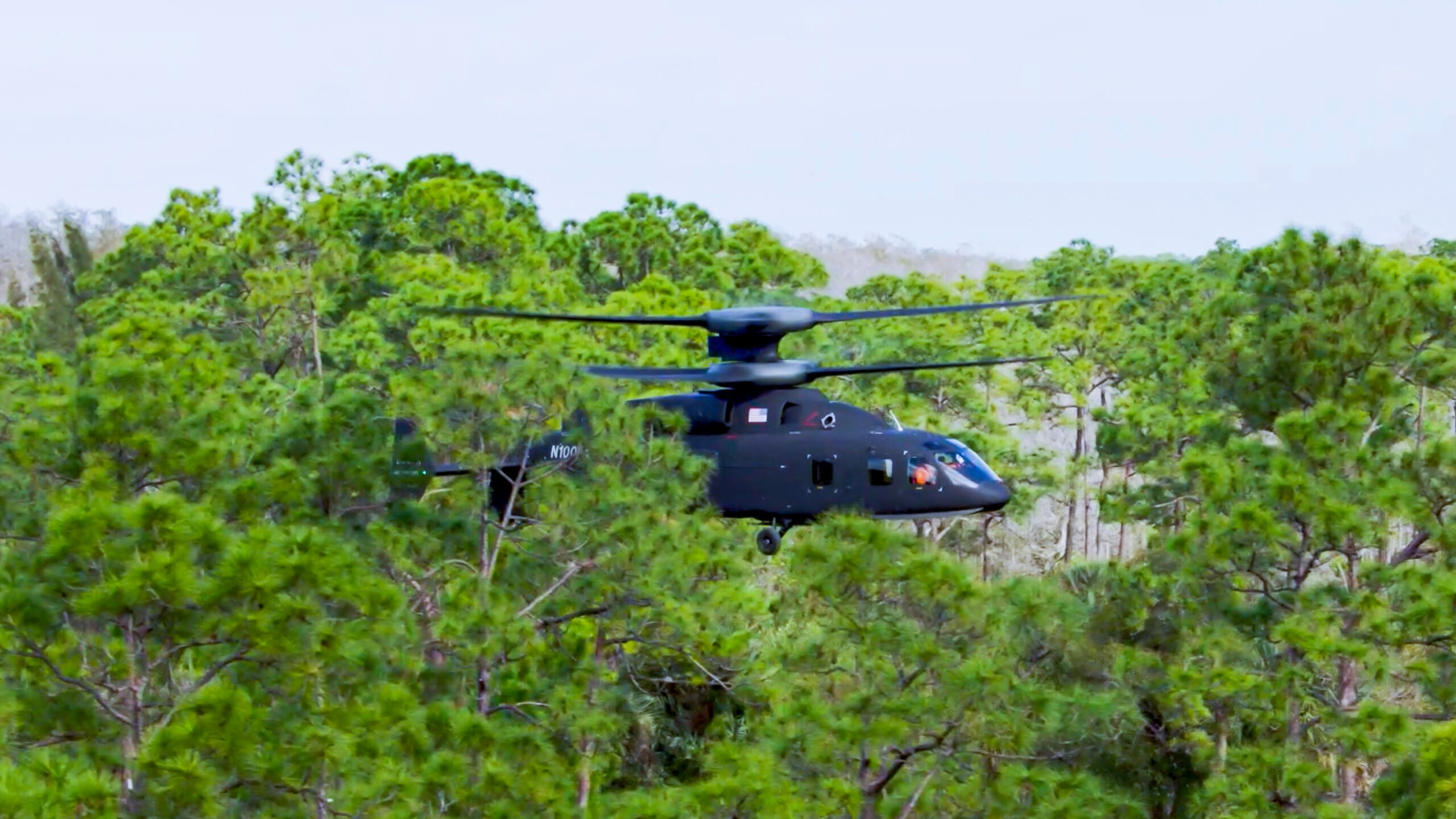
Sikorsky-Boeing’s FLRAA offering flies during a flight test. (Courtesy of Sikorsky-Boeing)
WASHINGTON: The Lockheed Martin Sikorsky-Boeing team announced today that its technology demonstrator for the Army’s Future Long-Range Assault Aircraft successfully flew its first mission profile, including low-level flight operations and confined area landings.
The successful flight test for the SB>1 DEFIANT platform comes as the Army prepares to choose between the Sikorsky-Boeing team and another team from Bell Textron in the third quarter of fiscal 2022 for the FLRAA competition. That competition is part of the Army’s future vertical lift modernization effort and will replace the service’s UH-60 Black Hawk fleet.
While industry is competing for the contract now, first unit equipped for the FLRAA program isn’t scheduled until 2030. The FLRAA program is run by the Future Vertical Lift Cross-Functional Team.
Related: Lack of future helo doesn’t stop Army’s Future Vertical Lift experiments in the desert
The Sikorsky-Boeing team calls their FLRAA offering DEFIANT X, designed with a coaxial rotor system for maneuverability. According to the press release, DEFIANT flew at 236 knots in level flight and quickly decelerated to the landing zone during the flight test.
“We fully demonstrated DEFIANT’s ability to execute the FLRAA mission profile by flying 236 knots in level flight, then reducing thrust on the propulsor to rapidly decelerate as we approached the confined, and unimproved, landing zone,” said Bill Fell, DEFIANT chief flight test pilot at Sikorsky. “This type of level body deceleration allowed us to maintain situational awareness and view the landing zone throughout the approach and landing without the typical nose-up helicopter deceleration.”
A YouTube video released by the DEFIANT team, dated Jan. 5, shows that the FLRAA demonstrator successfully flew 60-degree banked turns, low-altitude operations in trees, and low-level speed, maneuverability and agility. DEFIANT X will be able to fly soldiers and cargo into battle at twice the range of the Army’s current helicopters, the joint team says.
“It’s what we call building combat power rapidly, and aircraft like the DEFIANT X can do that,” said Tony Crutchfield, a retired Army three-star and vice president of Army Systems at Boeing. “In the Pacific, it’s even more important because your lines of operation are going to be dispersed over a wide area; you’re going to have these small bases and supply lines that’ll be positioned either on ships or on islands.”
Previously, according to the release, the SB>1 DEFIANT platform has exceeded 245 knots in level flight and demonstrated “mission relevant” cargo capacity by lifting the Guided Multiple Launch Rocket System that weighs 5,300 pounds. It’s also integrated Army test pilots and demonstrated low-speed agility with fly-by-wire controls.
Meanwhile, Sikorsky and the Bell Textron team are also competing to design the Army’s Future Attack Reconnaissance Aircraft, designed as a high-speed, light scout helicopter.
RELATED: The Army’s 10-year plan for FARA scout
In a ‘world first,’ DARPA project demonstrates AI dogfighting in real jet
“The potential for machine learning in aviation, whether military or civil, is enormous,” said Air Force Col. James Valpiani. “And these fundamental questions of how do we do it, how do we do it safely, how do we train them, are the questions that we are trying to get after.”


























